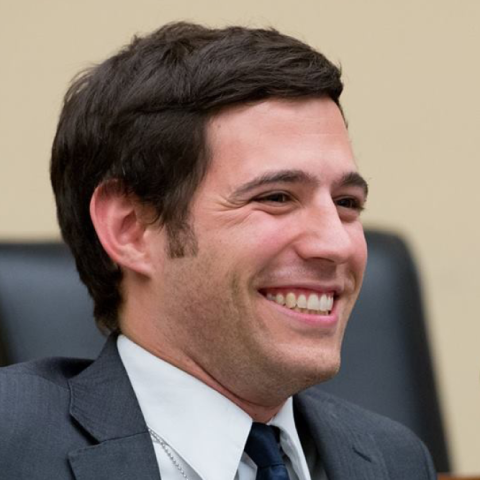In the near future, the Biden administration will reveal a much-needed review of the United States’ broader sanctions policy. A comprehensive review is long overdue, not least because certain sanctions policies in places like North Korea and Iran have been in place for decades. And sanctions regimes have only expanded in recent years, whether it pertains to the Trump administration leveraging sanctions in Venezuela or the Biden administration recently launching sanctions against entities in Belarus. Together, these sprawling sanctions orders have created a cobweb of confusion for private entities.
The “extensive review” will, as the Wall Street Journal reported, aim “to stem sweeping pressure campaigns” as well as mitigate collateral damage and encourage coordinated, multilateral sanctions responses. But many observers are increasingly concerned the administration will come to one underlying conclusion: American sanctions need to be scaled back to an unprecedented degree, unwinding years of work from multiple administrations.
That would be an understandable impulse amid ongoing questions about the efficacy of sanctions as applied to everything from Cuban brutality to Russian aggression to Iranian nuclear weapon production. But a wholesale scaling back of the use of sanctions would also be an overreaction. Certain categories of sanctions have proved both effective and efficient—it’s just a matter of realizing which ones.
Much of the focus on sanction center efficacy is on so-called “behavioral change” or whether or not the imposition of sanctions actually affects the sanctioned party’s behavior. In many ways, this is the simplest rubric for measuring sanction efficacy. After all, if the targeted regime specifically pursues a different course of action—if it ends its nuclear weapons program, for instance, or if it removes its forces from a neighboring country—the efficacy of the sanctions is there for all to see. Few recent moves better encapsulate how this theory can work than the release of pastor Andrew Brunson from Turkey after the United States issued sanctions against two high-level Turkish officials—though even the direct causality of that move is debated.
Yet there are any number of examples in which these efforts at behavioral change clearly failed. North Korea is the prime example of a regime apparently unfazed by ongoing and expanding sanctions. Despite decades of U.S. sanctions on Pyongyang, the Kim regime nonetheless still stands, still brutalizes its population, and still enjoys the use of nuclear weaponry. Other regimes, whether in Syria or Venezuela, also appear to be following similar paths, sloughing off U.S. sanctions while continuing to smother any efforts at democratization. Those opposed to U.S. sanctions programs understandably focus on this behavioral school of thought. And they have a point: Not only have these regimes remained, but they’ve even led to situations in which regimes solidify authoritarian grips on power, enabling dictators—such as the Kim regime in North Korea or Saddam Hussein in Iraq—to allocate increasingly scarce resources for the despot’s own benefit.
Yet those focused on behavioral change as the sole raison d’être of sanctions programs miss the forest for the trees. Because as the past decade has illustrated time and again, behavioral change is hardly the lone purpose for U.S. sanctions. If anything, sanctions have evolved in a far more effective direction in recent years, with an entirely different ethos than simply behavioral change. Instead, sanctions have increasingly—and increasingly successfully—been used to target, upend, and dissolve networks of malign figures: of kleptocrats and oligarchs and organized crime organizations around the world. In doing so, they’ve developed not only into key blocking tools, preventing these malign networks from worming their ways into Western polities, but they’ve also become key tools in the United States’ broader counter-kleptocracy arsenal—and deserve far greater expansion than they’ve seen thus far.
The initial forays at using sanctions as tools specifically dedicated to dismantling specific networks date back to the war on terror. And it’s not hard to see why. As the late Sen. Carl Levin, considered the godfather of U.S. counter-kleptocracy efforts, said in 2004, “Osama bin Laden boasted that his modern new recruits knew the ‘cracks’ in the ‘Western financial systems’ like they knew the ‘lines in their hands.’” The sanctions levied against al Qaeda and other terrorist organizations during the war on terror centered less on changing the terrorist organizations’ behavior and more on specifically disabling and ultimately destroying their networks, primarily via starving them of financial access. Even with the recent resurgence of the Taliban in Afghanistan, the terror networks the Taliban once provided cover for have wilted, in no small part thanks to U.S. efforts at specifically targeting those groups’ financing and using sanctions to specifically disable those networks.
Yet sanctions experts are just beginning to apply this same logic—of using sanctions to specifically disable networks—to kleptocratic networks. And there is reason to believe that with the overwhelming focus on sanctions and behavioral change, this logic may simply fall to the wayside. Already, the administration decided to waive sanctions on those responsible for the Nord Stream 2 pipeline, including managing director Matthias Warnig, even though the pipeline is widely considered a vessel for transnational corruption for the Kremlin’s benefit. The administration’s logic centered on the claim the Nord Stream 2 pipeline was nearly complete and further sanctions would not change the behavior of those responsible. And even with the administration’s welcome focus on combatting corruption, it has declined to issue further sanctions on Russian oligarchs. Once again, the administration’s reported concern is such sanctions would not change their behavior and may even force them closer to Russian President Vladimir Putin.
This is a shame because the tools that successfully uprooted terror financing are in many ways the same as those now targeting the kinds of malign, corrupt networks propping up autocratic regimes around the world. A survey of the existing sanctions programs in this vein point to their success—and why these programs deserve to be expanded that much further. The first major use of these specific, network-dismantling sanctions for corrupt, kleptocratic figures was the United States’ passage of the Magnitsky Act in 2012. Although Magnitsky-style sanctions have grown in popularity in the West in recent years, it is difficult to overstate just what a break with precedent the original program was. Where previous sanctions focused on short-term national security issues, such as terrorism or proliferation, these sanctions were the first to put teeth on a key element of long-term national security: human rights and anti-corruption. This law, named for late Russian national Sergei Magnitsky, mandates the United States place specific sanctions on figures responsible for Magnitsky’s death and other human rights abusers in Russia. For the first time, the Magnitsky Act publicly named and shamed corrupt officials, barring these figures from accessing U.S. financial markets—and leaned on allies to do the same. The efficacy of such a program can be seen in Moscow’s retaliation, from the Kremlin banning a number of U.S. officials and even specifically barring U.S. nationals from adopting Russian orphans.
In 2016, Congress launched the Global Magnitsky Act, providing the White House authority to issue sanctions on any human rights abuser or corrupt actor anywhere in the world. The Global Magnitsky Act does not fit the behavioral change paradigm; the goal is to disable the networks of those sanctioned, not necessarily change their behavior. However, by singling out such corrupt or kleptocratic individuals, the program protects the Western financial system from abuse and illicit funds. It likewise offers a form of explicit accountability for those harmed by kleptocrats who would otherwise enjoy impunity. By these metrics alone, it has been highly successful. The Trump administration used this program aggressively in a number of different areas, sanctioning corrupt actors around the world. From Myanmar to Saudi Arabia, from Nicaragua to the Democratic Republic of the Congo, the United States launched sanction after sanction against specific individuals engaged in gross corruption, transnational money laundering, and kleptocracy writ large. The Biden administration has carried forward this bipartisan work, even going so far as to sanction corrupt individuals in allied countries like Bulgaria.
If anything, the Global Magnitsky Act deserves far greater expansion than seen already—all around the world. (There is, after all, no such thing as a “pro-Western” oligarch nor a “pro-Western” kleptocrat.) In Central Asia, for instance, the United States has only levied a grand total of two Global Magnitsky sanctions despite a range of brutal, kleptocratic regimes in the region. Given the withdrawal from Afghanistan—and the sudden decrease in the importance of U.S. security relations with regional regimes—the United States should consider rolling out new, targeted sanctions against a range of figures in the region, including figures like former Kazakh dictator Nursultan Nazarbayev.
Nor should the United States stop there. If anything, Washington’s arsenal of specific, targeted tools aimed at oligarchs and kleptocrats around the world—disabling their financial networks and blocking them from Western (and other) financial systems—should be expanded on all fronts. That includes things like Section 7031(c), which originated in the 2008 Consolidated Appropriations Act and has since evolved to allow the executive branch to ban human rights abusers and kleptocrats from the United States—and then make those bans public. That also includes passing things like the Revealing and Explaining Visa Exclusions for Accountability and Legitimacy (REVEAL) Act, a bipartisan bill that would enable the executive branch to reveal the names of human rights abusers and kleptocrats already banned. This provision is regularly used to ban bad actors—as it was recently used against Saudi individuals involved in the murder of journalist Jamal Khashoggi—but those bans are protected under a confidentiality requirement, which the REVEAL Act would remove.
This expansion would fit in the Biden administration’s recent move to elevate anti-corruption efforts to a “core U.S. national security interest” as well as Congress’s recent move to create the Counter-Kleptocracy Caucus to specifically fight the “national security threat of corruption.” Such expansion should also extend to other arenas, such as Western figures helping these kleptocrats move their money or even things like climate destroyers (using so-called “green sanctions”).
We should stop worrying so much about whether sanctions are changing behavior and instead continue to use them for what we know they are good for: disabling kleptocrats and their networks, blocking such entities from Western financial systems, and providing accountability for victims around the world. They are not only among the most successful sanctions-related programs to date—not least because of how they’ve specifically dismantled oligarch networks reaching their tendrils into the West—but because, as we’ve seen in recent years, kleptocratic networks and terrorist organizations follow the same financial pathways. Some of the United States’ sanctions programs should absolutely be reformatted or even scrapped wholesale. But between the successes in dismantling terror financing a decade ago and in targeting kleptocrats, corrupt oligarchs, and regime insiders in the past few years, the kinds of specific sanctions programs already in place should continue for years to come—and for as long as these malign, illicit finance networks continue to access Western financial markets and bankroll their kleptocracies around the world.
Read in Foreign Policy


















